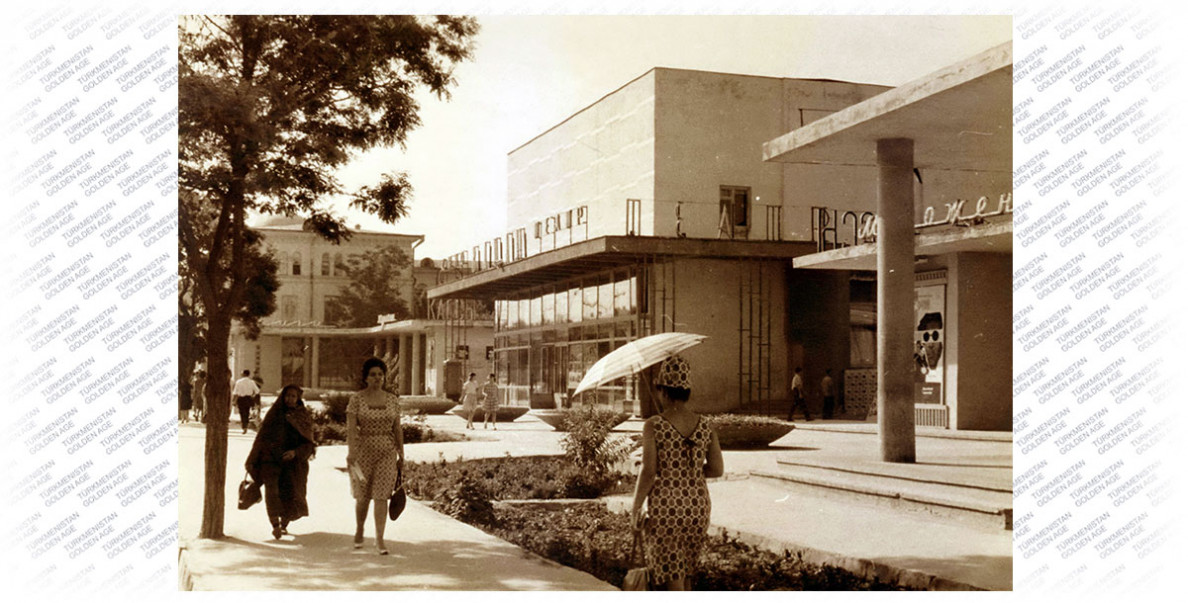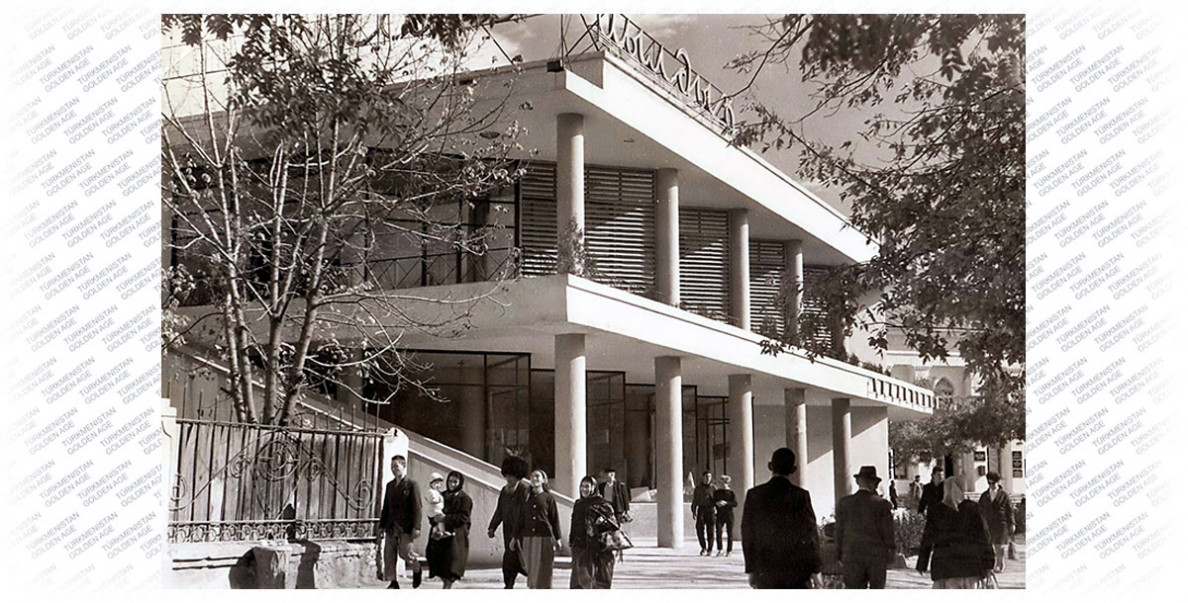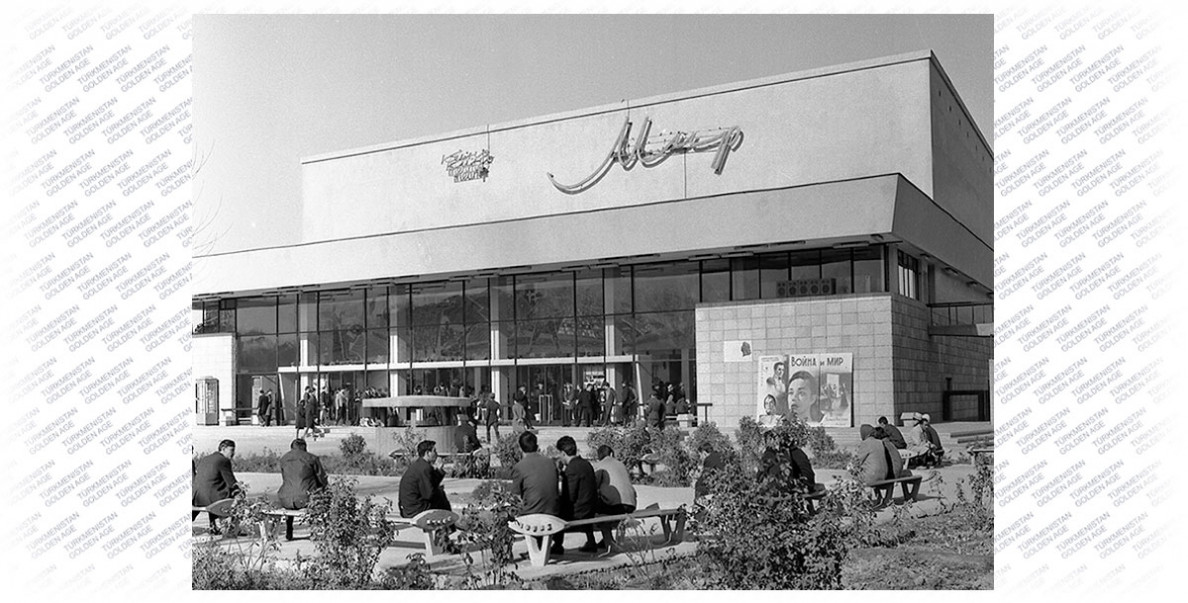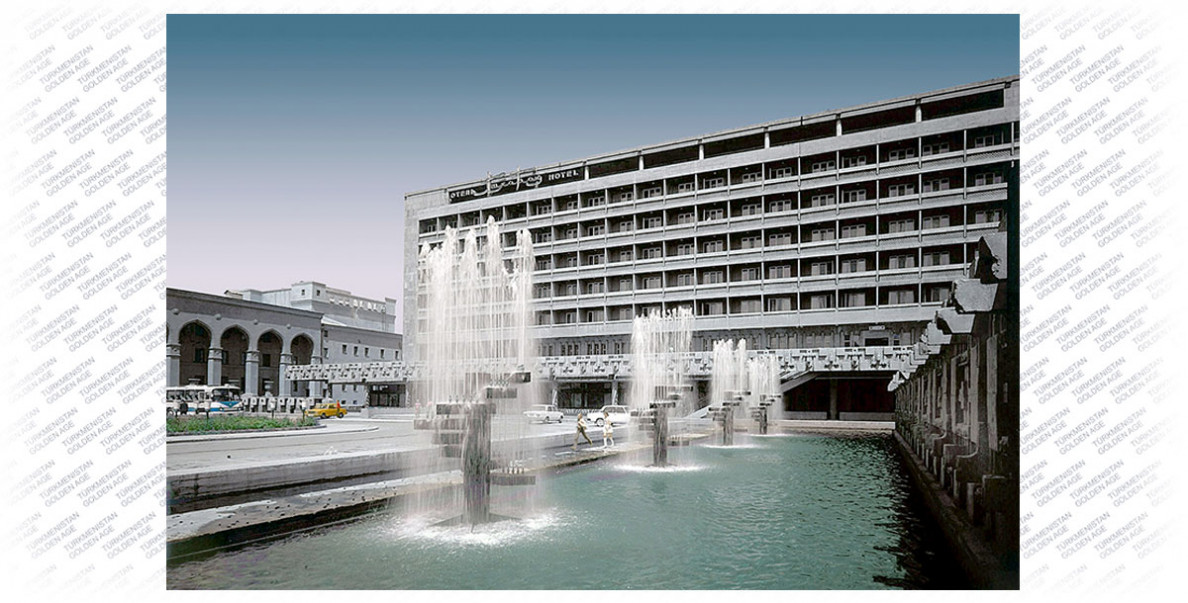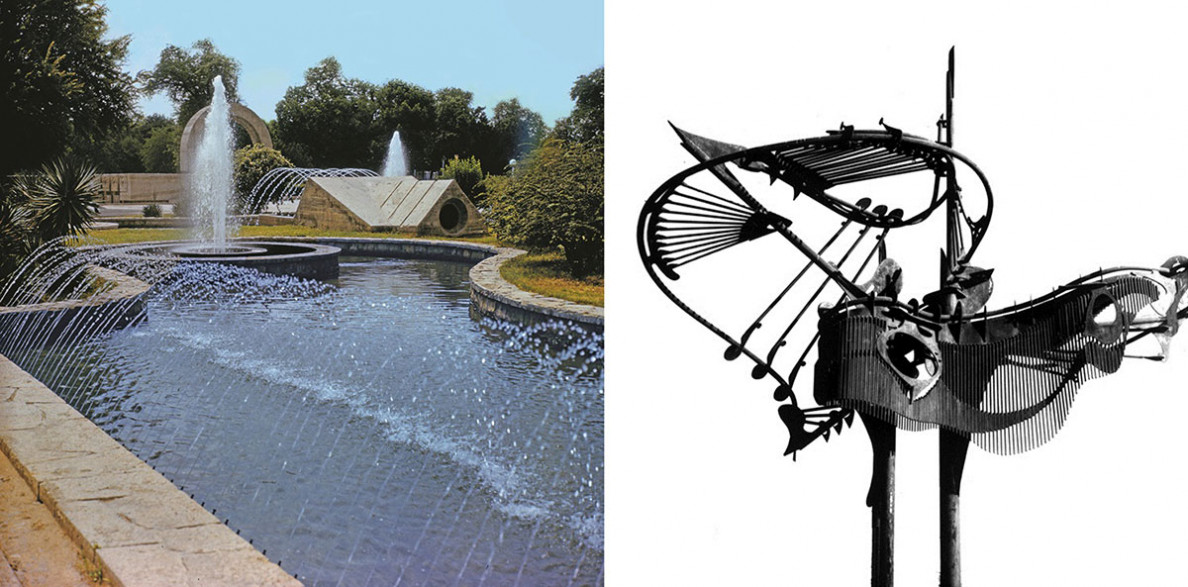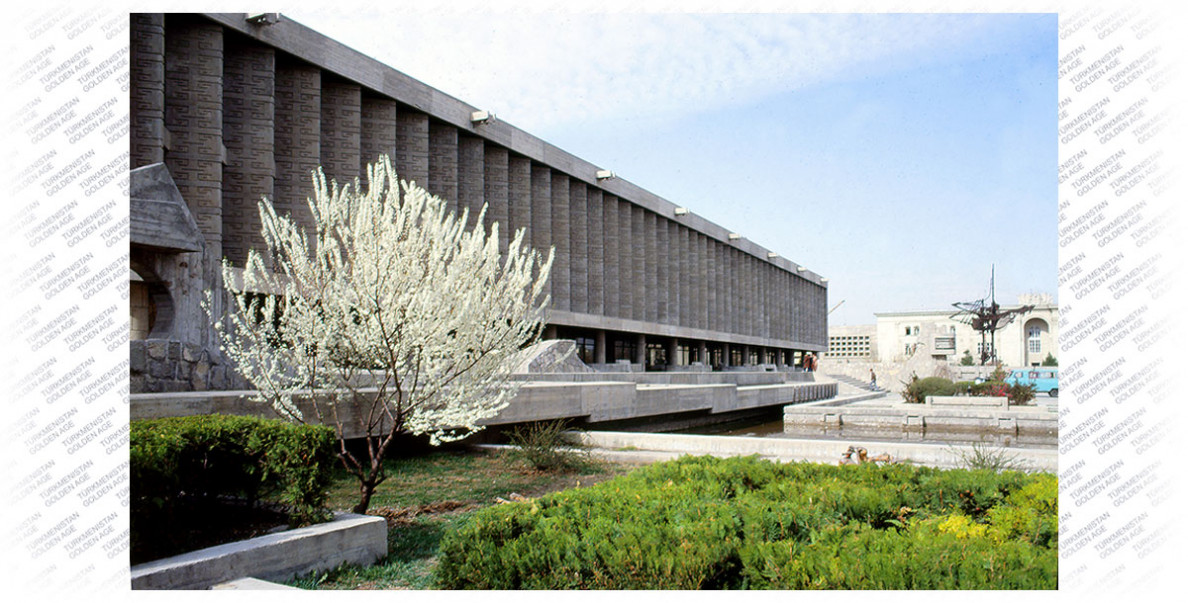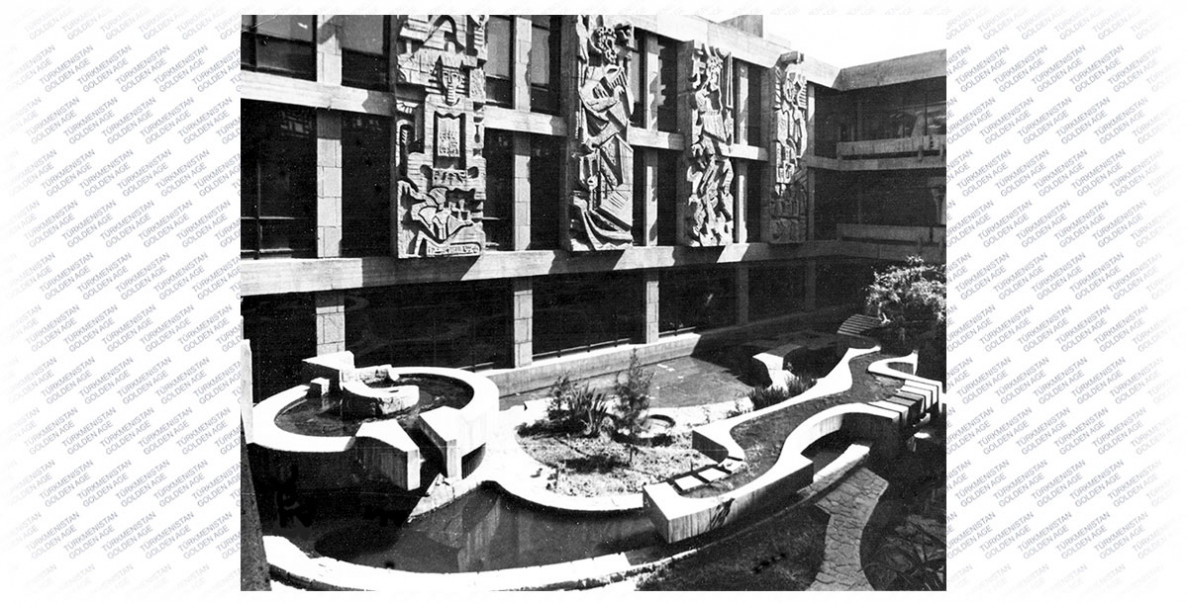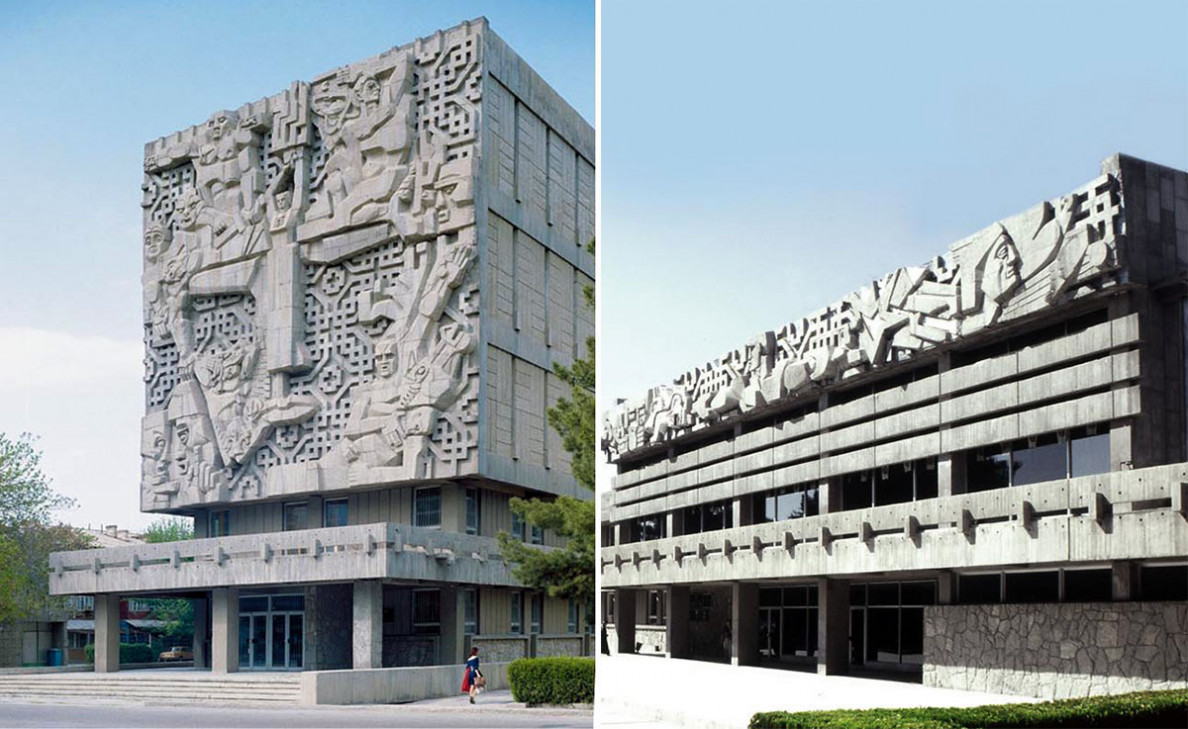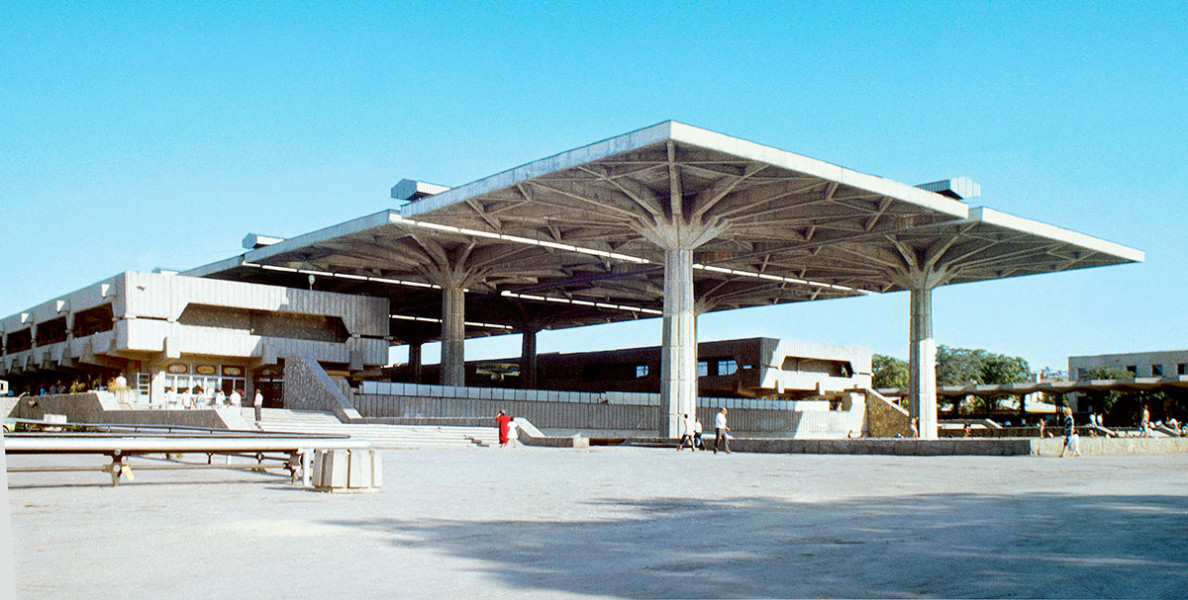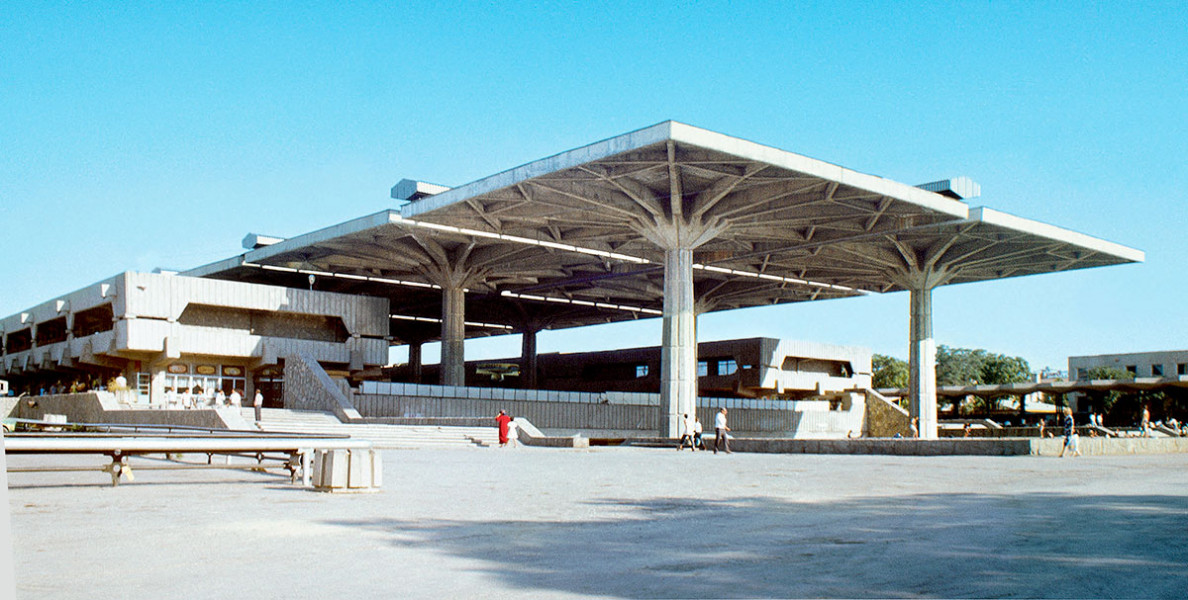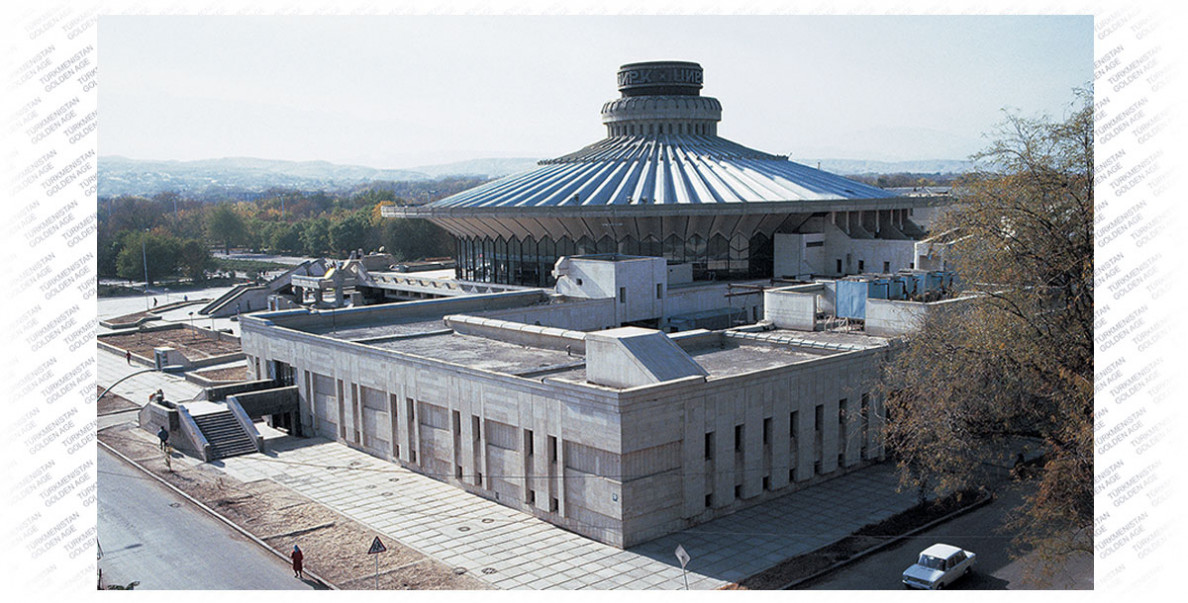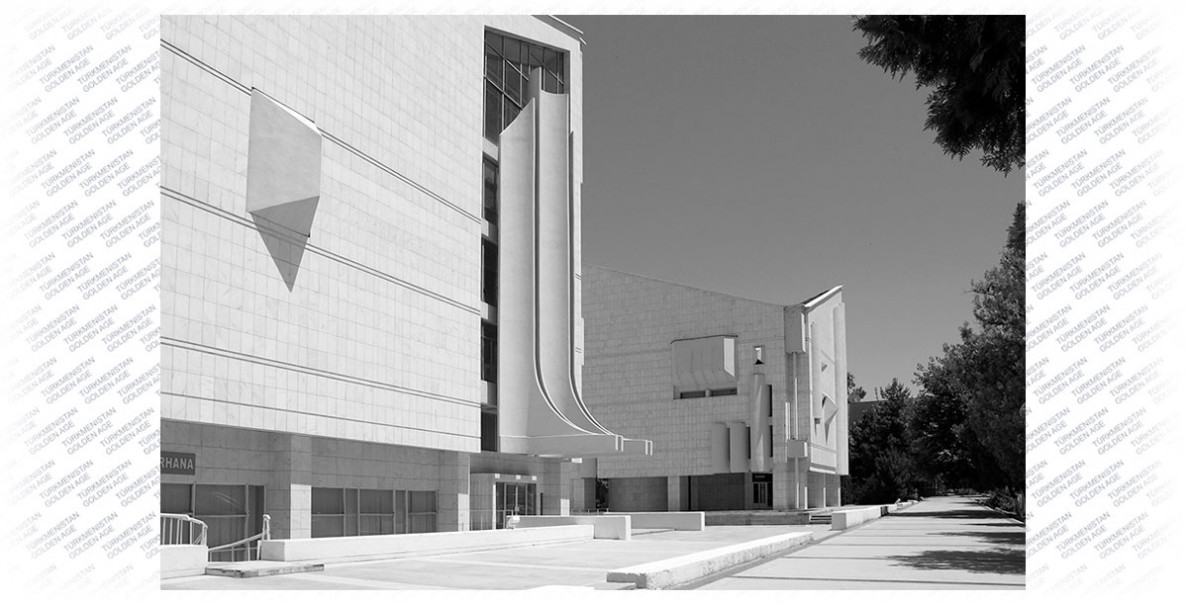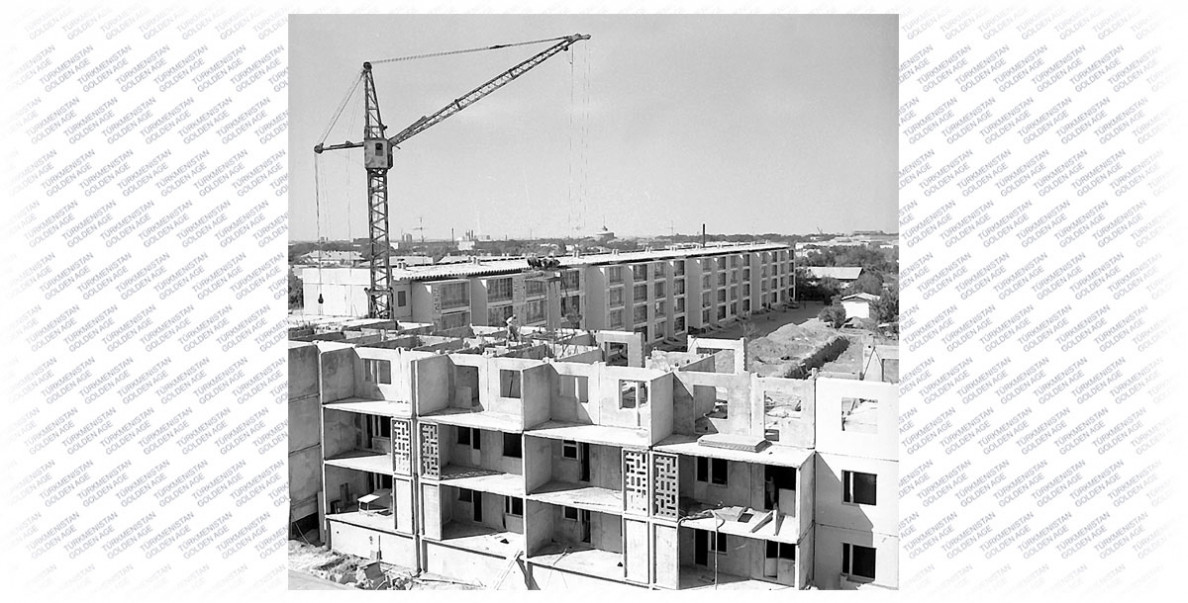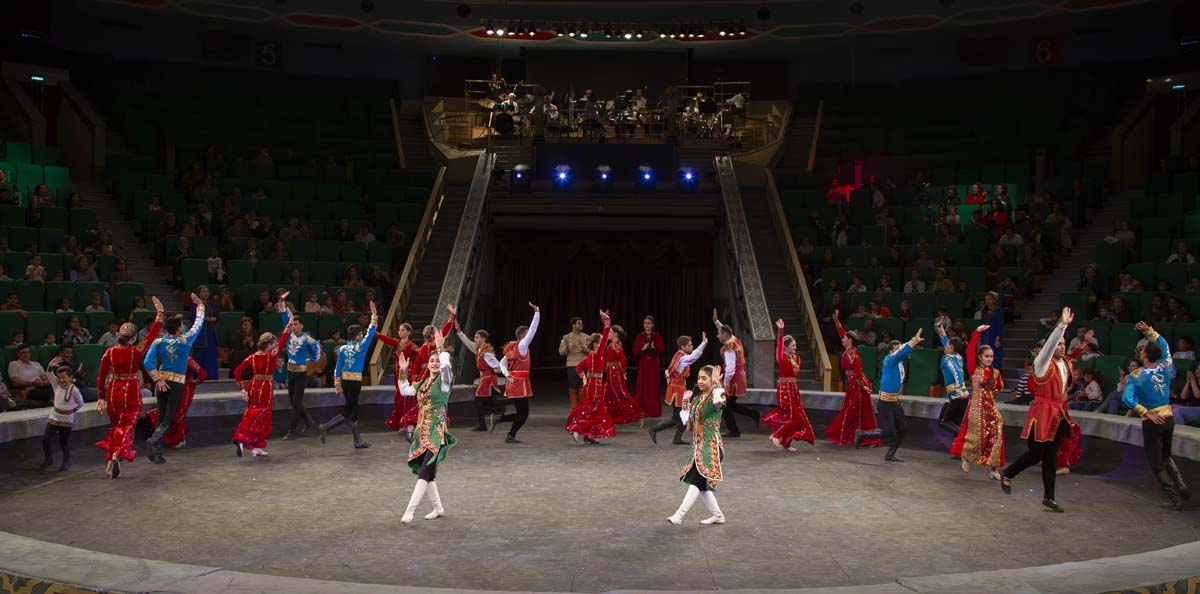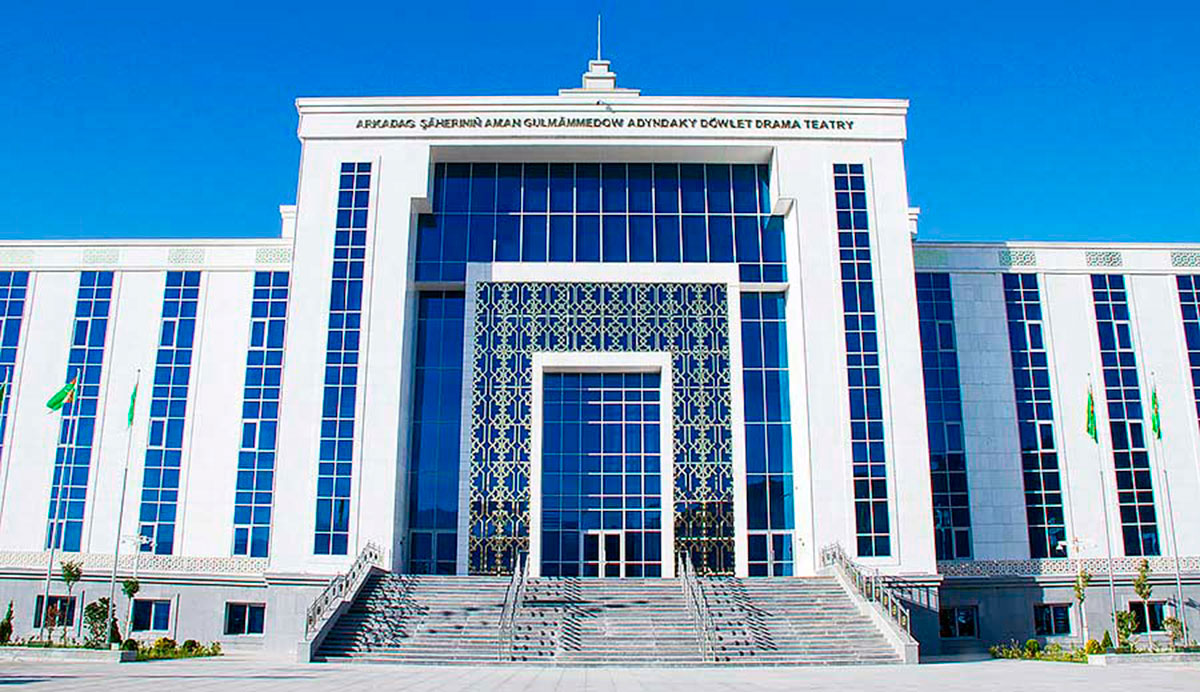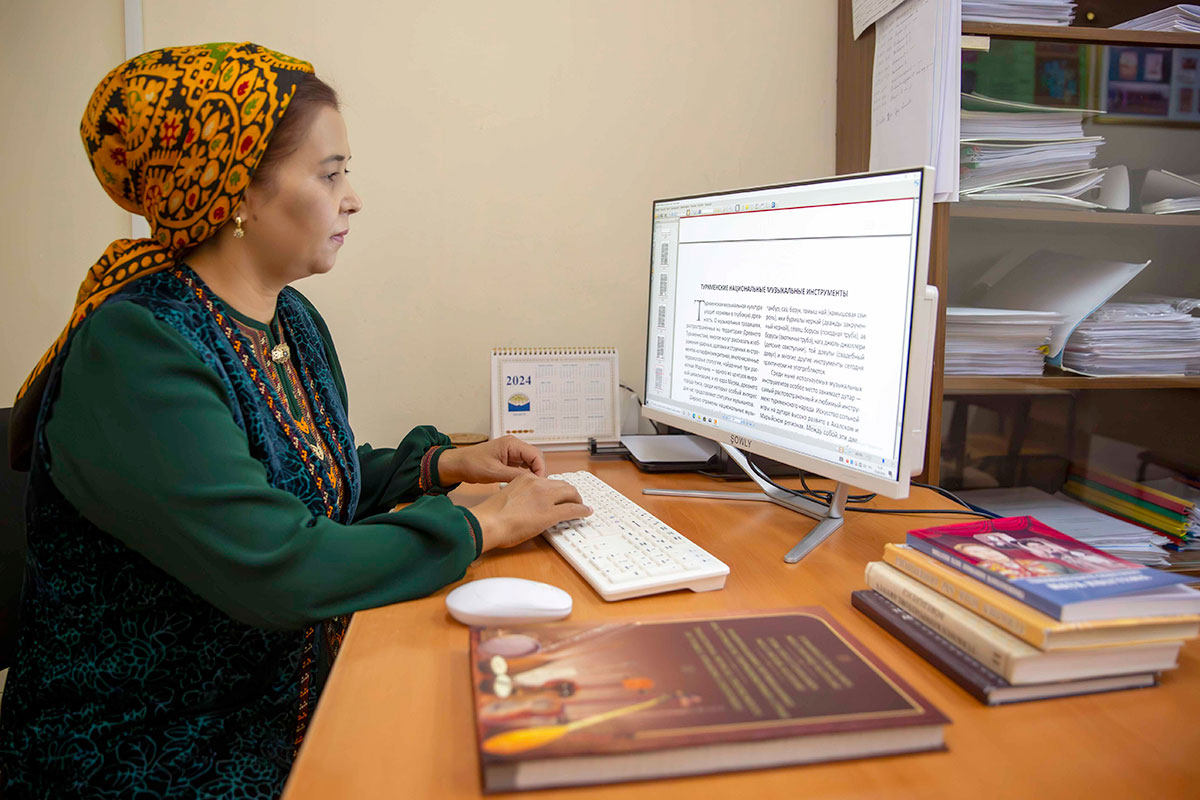On the days of celebration of the 140th anniversary of the capital of Turkmenistan, it is worth to look back and recollect from what Ashgabat began, what forestalled its appearance and what stages of history left traces in its current image. This city, which is loved by all generation of Ashgabat citizens, has its unique image these days as well being under dynamic development, it has the same uniqueness like it had in the past. The architectural historian Ruslan Muradov finishes his story about this. The previous part of the story is under this link.
Soon after Nikita Khrushchev initiated elimination of “excesses in project design and construction” in 1954, rapid transit to total unification and economy of resources and materials has happened and development of language of modern architecture, which was forgotten for the quarter of the century of Stalin Empire style, has occurred in creative art. Back then, Abdula Ahmedov has distinguished himself among young generation of architects, who were sent to Ashgabat on assignments after receiving higher education in architectural educational institutes of Baku, Moscow and Tashkent. For the years of work as the General Architect of the city (1961 – 1987), he has become a recognized master of soviet modernism and entered the history of architecture as author of several unique public buildings in Ashgabat.
The role of Ashgabat as republican center of economy, science, education and culture has significantly grown in 1960 – 1970s. It has turned into big transport hub owing to transit railroad and airport. Air routes connected Ashgabat with the capitals of other republics and big cities of Russia, Caucasian and Crimean resorts as well as with remote settlements of Turkmenistan. City transport was developing in the capital; trolleybuses have been put into operation in 1964. Power line improving the energy base has been connected to Ashgabat in 1976 from Mary State Power Station. New production branches were developed together with traditional ones. Production of oil engineering industry plant and electro-mechanical plant was exported to foreign countries together with glass, fabrics, carpets and vintage wines made in Ashgabat.
The sixties were the time of movie boom and active construction of various cinema halls all over the world. Turkmen capital was not aside from this trend: in addition to typical ones, two wide display cinema halls Watan and Mir were opened. Each of the cinema halls was original in design and was a place of attraction of several generations of children and adults. Bahar Cinema Hall (1969, Architect Fikrat Aliyev, Sculptor Alexey Schetinin) was distinguished with its original composition and creative design. First multi-store hotel, which also meet the time requirements, were built. Ashgabat Hotel (1964 – 1970, Architects Abdula Ahmedov, Boris Shpak, Designer Gennady Okayev), which became an example of harmonious synthesis of architecture and monumental art, was one of the brightest buildings.
Local architectural school was significant cultural occurrence in Central Asia in seventies and eighties. Owing to his talent of creator and diplomacy in relations with customers, Ahmedov has managed to avoid typical extremes of construction policy of Brezhnev’s period – sketchiness and stiffness of dimensional engineering design, low quality of project and common architectural similarity. Many public buildings of that period belie common myth of mediocracy of modernism architecture. Same like in developed countries, these buildings are the facilities of cultural heritage and special scientific study now.
Unique ensemble interpreted by Ahmedov as a micro oasis has been formed in historical center of Ashgabat at former Karl Marx Square. Complex geometry of its fountains, pools and small architectural forms was highlighted by contrast background: vertical rhythms of façade of the Karakumstroy Building (1964 – 1967) and massive in details but slender and quite proportional State Library of Turkmenistan (1964 – 1976). Its official three-store building faces open court of honor – the parade court in front of the entry to the building including stairways, ramps, retaining walls, lawns, pools and drains. Monumental relieves, on which Moscow sculptors such as Ernst Neizvestniy, Ludmila Kremneva, Vladimir Lemport, Nikolay Silis and Tatyana Sokolova used to work, have been used in the interior of the library and three of its inner courts. Famous Vadim Kosmachev is an author of virtuosic metal construction in front of the main façade of the library. The “Constructa”, this is how he calls it, is some kind of nerve, which gives sound to this part of the square.
Several buildings on Magtumguly Avenue as well as complex of buildings of party archive and the House of Political Education, currently Mekan Palace (1971 – 1974, Architects Vadim Klevensky, Dagmara Vystoskaya,, Sculptors Ernst Neizvestniy and Harlampiy Romanidi) are typical examples of using plastic features and natural color of concrete. Brutal bass relieves on the main facades of archive and conference hall enriched artistic culture of Ashgabat and raise interest of tourists and citizens for more than 50 years. Many other facilities, which were built under the leadership of Abdula Ahmedov and made unique image of the city, are relative by style.
The largest part of the quarter called in slang as Russian Bazar was built by one architect Vladimir Vysotin, Small café Sahra with unusual for that time umbrella roof and pool was the first to be built on the corner of Gogol and Engels Streets in 1964. Ten years later, he built shop Live Fish and Cookery with round windows looking like big portholes. Stylish decision of the façades with vertical sun shades distinguished three-store building of Turkmeniform Agency, which was also designed by Vysotin. Further, he developed a theme of umbrella roof in architecture of shaded bazar, which covers the entire block today. This massive construction seems like flying over the bazar and adjacent court received several prestige international awards and became one of the adornment of the city.
Mass construction of stationary circuses, which replaced popular circus tents, has started in the country in the seventies. Own monumental circus has appeared in Ashgabat as well. It is based on typical project with dome hall for 2,000 seats developed in Mezentsev Moscow Institute of Experimental Design for Central Asia. It has been built later in Ashgabat in changed format (1979 – 1984, Architect Arif Zeynalov). The interior of the circus includes bass relief ornament, ceramic panels, colored stained glass window (Artists Izzat Klychev and Gennady Okayev). Building of Music College was another famous long construction building in Ashgabat. The project has been developed in Moscow’s Gyprotheatre Institute in 1965 while the construction lasted for 17 years (1975 – 1992). This facility, complicated by its composition, has become a final chord of modernism period, which by the end of construction was almost accomplished being replaced with post-modernism and other style trends of our epoch.
Of course, the main construction of the city was made up from not so expressive pieces of architecture as residential buildings. Micro-districts with standard sets of typical large-panel, rarely masonry, three-, four and five-store buildings without elevators, which contradicted to construction standards of that time, were built. Social facilities like kindergartens, schools, clinics, shops were built in each micro-districts. Resources were regularly allocated from the state budget for reconstruction and expansion of communication network, modernization of construction industry and establishment of street design as independent sphere of activity. The truth is that not many things were done. The USSR system of project design and construction with its bulky and ineffective bureaucratic system, absurd limitations and standards, which did not take into account the specifics of different climate regions, was the main obstacle. Gosstroy – monopoly organization, in which narrow interests of departments were put higher than effective implementation, was the embodiment of this depravity. Economic collapse and crisis in the end of the 80s have worsened the situation, having cancelled previous objectives of the city development, harmonization of living environment and urban development.
We may put an end to this and say that the history is finished at this point and modern time is starting. But the last 30 years are the history as well. Again, Ashgabat has changed several times as before and beyond recognition in some places. The uniqueness and phenomenon of this city is permanent renovation. The city never experienced such scales. Developed according to the given vectors, the capital of Turkmenistan turns into modern mega city. We do not know yet how it would merge into the world architecture of XXI century but it will be another Ashgabat and other history.




